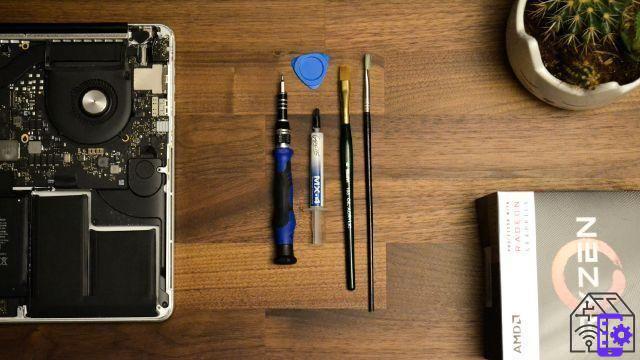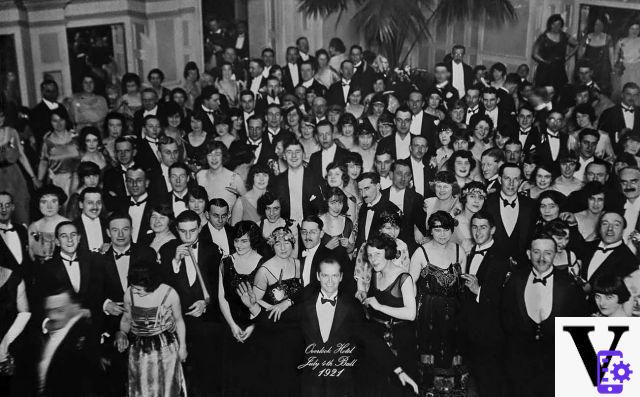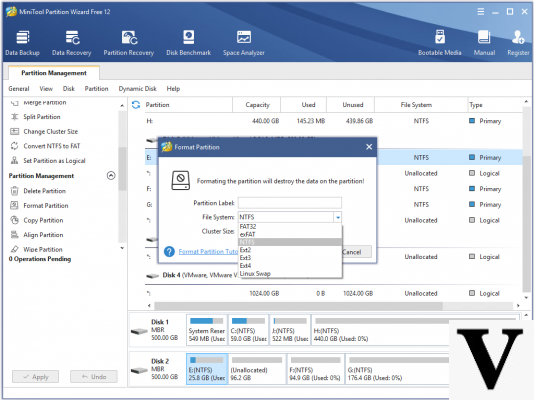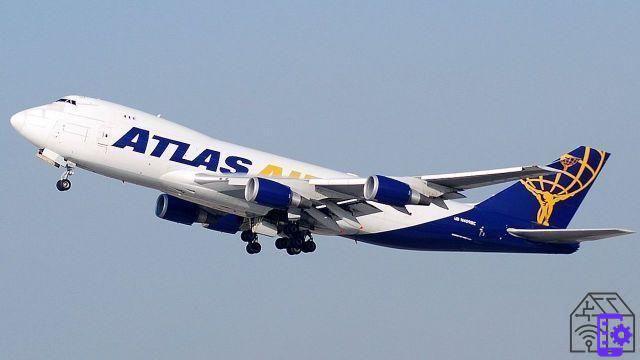
Now that the world situation regarding the pandemic seems to have stabilized (or almost) we can finally return to travel. With Green Pass in tow, that's clear. And it was precisely this glare of return to normality that inspired us for the new column "How has it changed". Today we want to tell you, in fact, about the evolution of the air travel, from its origins until today. After all, although it may now seem obvious to us to get on a plane to reach another continent, once flying was only one of the most hidden desires of man. So let's see who - and how - turned this dream into reality.
The Wright brothers and the dream of flying
Like most modern inventions, even that of the airplane has its roots in the projects of the genius of Leonardo Da Vinci. Inspired by the flight of birds, the Tuscan artist created the first project of ornithopter - a wing surface aircraft - as early as the early sixteenth century. In detail, the idea of Da Vinci consisted in creating a sort of flying spacecraft complete with a cockpit, equipped with two huge wings that allowed it to soar in flight. A "primitive" project, which demonstrated for the first time that flying was no longer a dream, but a simple matter of mechanics.
From that moment, however, centuries passed before the idea of a trip by plane could materialize. The first real airplane, in fact, dates back to December 17 1903. That day the brothers Orville e Wilbur Wright managed to get off the ground near the town of Kitty Hawk Flyer, the first motorized vehicle to perform a flight in history. In reality, it wasn't even a real plane, but a biplano It equipped with a 12 horsepower internal combustion engine, made for the occasion by Charlie Taylor, assistant to the two brothers. The real intuition of the Wrights was precisely to make a normal motorized glider, equipping it with propellers designed and made to measure by themselves.
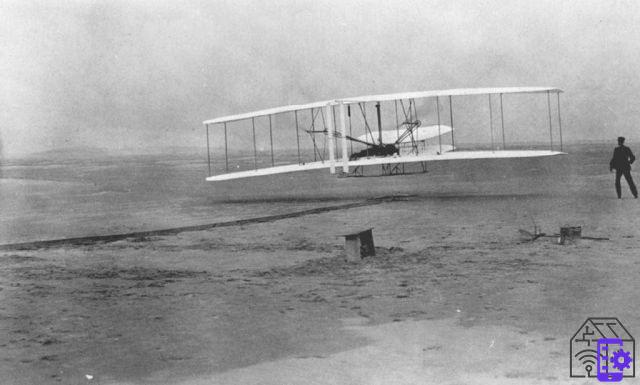
To be able to launch it in flight, the Wrights had thought of a kind of wooden rail 18 meters long, on which the Flyer slid inside a mobile trolley. Once it reached take-off speed, the plane hovered in the air. As for the landing, however, the biplane was equipped with skids in its lower part, which allowed it to return to the ground without problems. In fact, that December 17, 1903 the Flyer reached the height of 40 meters in a flight that lasted just 12 seconds. Yet despite this, that day is remembered by all as the birth anniversary of the airplane. In fact, never before has a man managed to fly aboard a motorized vehicle.
The origins of aviation
After the invention of the Wright brothers, advances in aviation followed one another at an incredible speed. On November 12, 1906, the Brazilian engineer Alberto Santos-Dumont he managed to make his airplane 14bis take off autonomously from the Aèro-Club de France in front of a large public, thus earning the nickname of "Father of Aviation". But the real feat was that of the engineer Louis Bleriot, which in 1909 flew across the English Channel aboard the monoplano Blériot XI. Unlike previous models, this one looked more like one of our modern airplanes.
The fuselage was made with a single wooden beam, closed at the front to ensure the protection of the pilot. The wings were thin and supported by sturdy cables, mounted at the front together with the engine. But the real "gem" of this plane was the 25-horsepower three-cylinder engine which operated a two-blade propeller in laminated wood, designed for the occasion by Alessandro Anzani. These were the characteristics of the first aircraft that managed to fly the distance from Calais to Dover at an altitude of about 100m above sea level. It was to all intents and purposes a trip by plane, even if without passengers. In fact, only Louis Blériot was on board. Yet his mere presence was enough to spread the belief that airplanes could make it possible to travel hitherto unexplored routes.
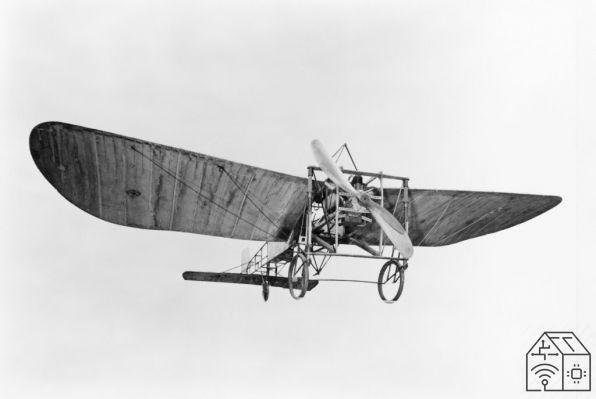
It is certainly no coincidence that the aviation technology begins to develop in the field of sporting events. Moved by the intention of reaching new records, many aviators contributed to the optimization of that strange machine that was the airplane. And the same did, for clearly different reasons, the World War I, which contributed greatly to the scientific evolution of the sector. On the other hand, the history of civil and military aircraft was closely linked in the early decades of the twentieth century, at least until Boeing revolutionized the sector.
Boeing: How Air Travel Becomes Habit
While the air force follows its evolution path thanks to the Great War, the spread of the aircraft as means of transport it is due to William Boeing. On July 15, 1916, together with the engineer George Conrad Westervelt, he founded the famous Boeing, the main manufacturer of commercial jets. In the Thirties, thanks to a collaboration with Pan American World Airways, the company created the Clipper, a transoceanic civil seaplane that flew in 1938. It was the largest civilian aircraft of the time, with a capacity of well 90 passengers on daytime flights and 40 in the nocturnal ones. An invention that revolutionized the air transport sector. This aircraft, in fact, was used the following year on the route between the United States and the United Kingdom.
But that wasn't Boeing's only contribution to the air travel industry. On August 15, 1958, the company's model 707 was delivered to Pan American, thus inaugurating the flight between New York and Paris. In this way, the United States begins to establish itself as a leader in the production of commercial jets. And from that point on, the industry has been growing. Here comes the B737, the best-selling model in the history of aviation, followed by a series of other models that open most of the world routes. And then air travel becomes not only possible, but also easily accessible. Getting around is simple. And Leonardo Da Vinci's dream becomes reality. For everyone.







